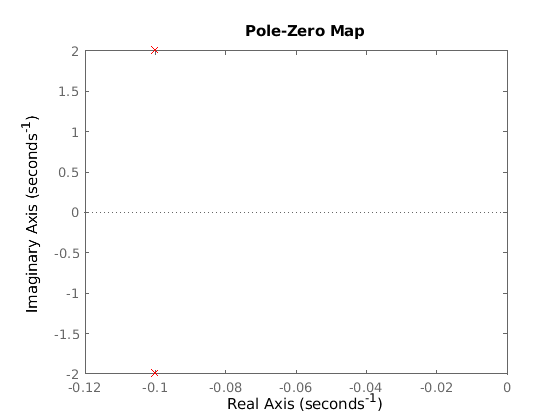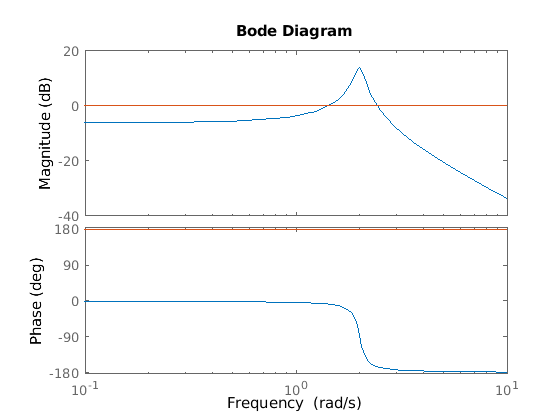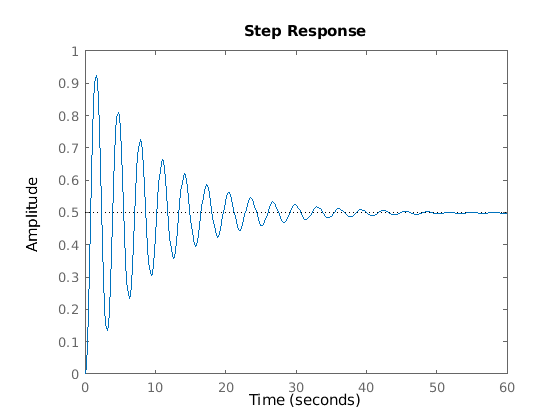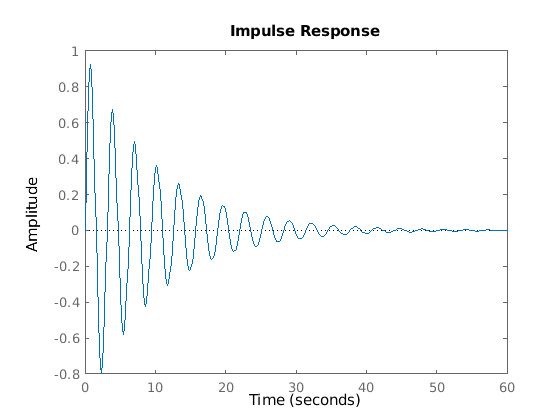Gedämpfte Schwingungen
clear all
syms t omega alpha
laplace(exp(-alpha*t)*cos(omega*t))
laplace(exp(-alpha*t)*sin(omega*t))
man sieht: mit  und
und  kann man getrennt die Dämpfung und die Eigenfrequenz einstellen.
kann man getrennt die Dämpfung und die Eigenfrequenz einstellen.
s=tf("s");
f=simplify((2)/((s+0.1)^2+2^2))
f =
2
------------------
s^2 + 0.2 s + 4.01
Continuous-time transfer function.
pzmap(f,'b');
bode(f);
hold on;
bode(tf(-1));
hold off;
stepplot(f);
impulseplot(f);














